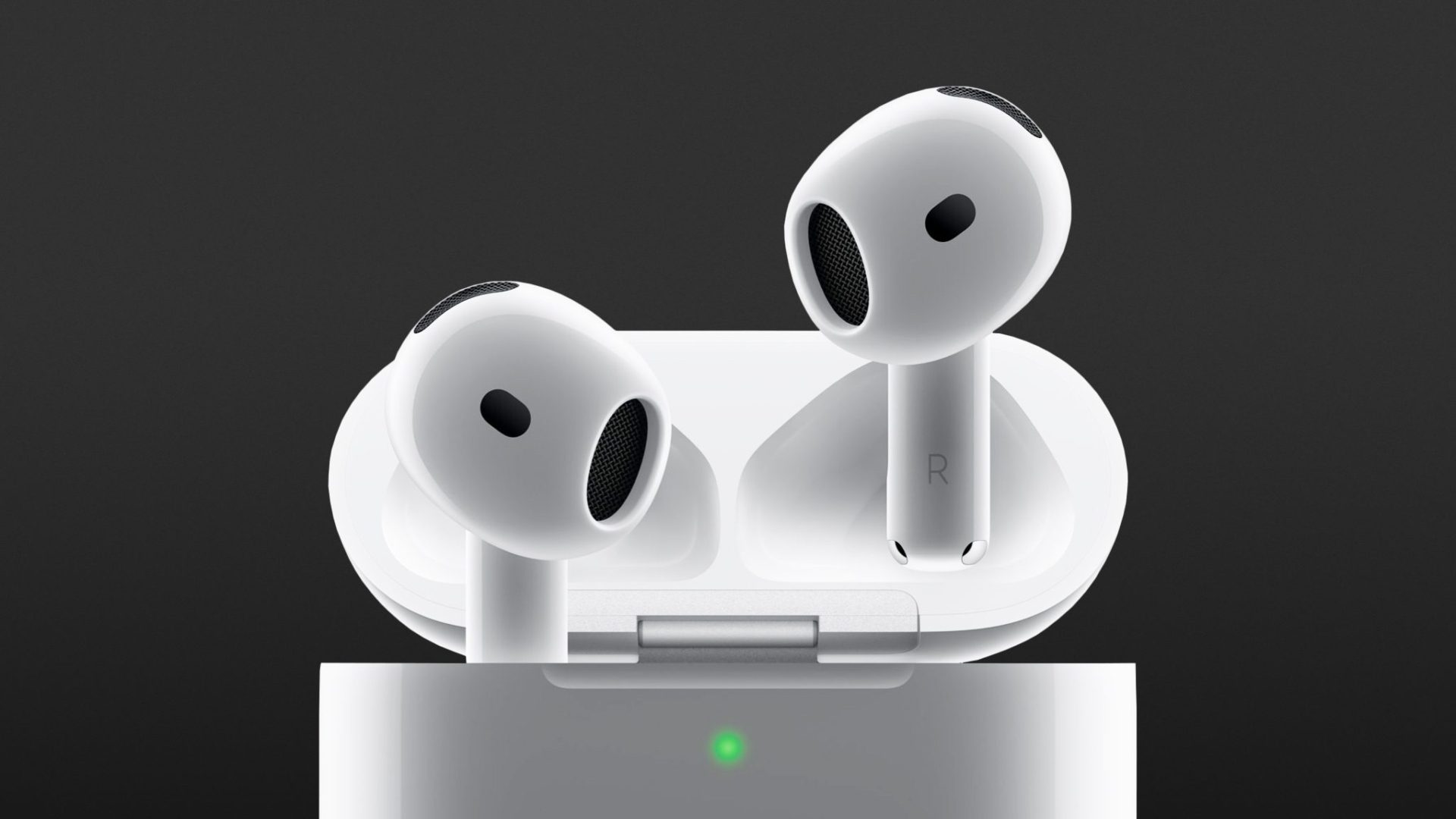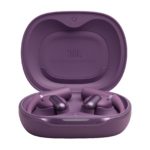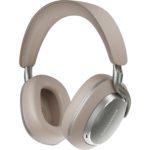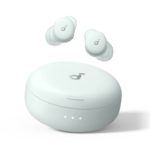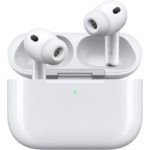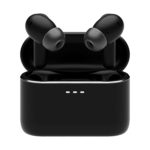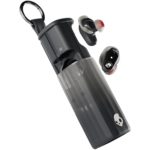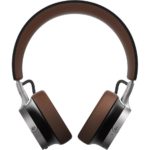Slightly smaller, with improved sound and the H2 chip from the Pro model, the new Apple AirPods 4 are a great upgrade. The ANC version’s noise cancellation is particularly noteworthy. While competitors have tried in vain to combine a (semi-)open design with active noise cancellation, the Cupertino tech giant has done a much better job. If you don’t like in-ear headphones for comfort reasons, and you’re also at home in the Apple cosmos, the AirPods 4 ANC are state-of-the-art headphones with few weaknesses.
- Sound
- Noise cancelling
- Transparency mode
- 3D audio with head tracking
- No volume control
- Lack of high-resolution Bluetooth codecs
- Lack of optimisation for non-Apple devices
- Lack of Auracast support
- No charging cable included
When Apple launches new products, one thing is inevitable: discussions about missing features, overpricing and competition. Let’s take a look at how Apple’s AirPods 4 compare to their predecessors and the Pro range.
Inhaltsverzeichnis
- Apple AirPods 4 ANC vs. AirPods 4
- What you get
- Wearing comfort
- Battery life
- Controls
- How the new Apple AirPods 4 sound
- Lossless audio only with Apple Vision Pro
- 3D audio with Apple AirPods 4
- Noise Cancelling & Transparency Mode
- Making calls with the Apple AirPods 4
- Apple AirPods 4 & Android
- The bottom line
Available with or without active noise cancellation (ANC), AirPods 4 are a welcome update to AirPods 2 and 3 from 2019 and 2021. Apple talks about an improved design, state-of-the-art technology, a powerful H2 chip and better sound.
We’re particularly interested to see how effectively active noise cancellation works in an open design. Until now, ANC has been reserved for premium models such as the AirPods Pro 2, whose in-ear design provides a physical seal to block out ambient noise.
Apple AirPods 4 ANC vs. AirPods 4 – Which is better?
The new AirPods 4 look and sound the same. They both use Apple’s H2 chip (including Bluetooth version 5.3), which is also used in the AirPods Pro 2.
The ANC version of the AirPods 4 we tested costs €50 more than the non-ANC version. But you don’t just get one more core feature for your money: although the charging cases are the same size and look almost identical, the case of the ANC model is equipped with a BLE chip (Bluetooth Low Energy) and – like the charging case of the AirPods Pro 2 – has a built-in speaker. In practice, this means that you can locate both the headphones and the charging cradle via ‘Where is?’; with the smaller AirPods 4, you can only locate the two earbuds via the sound output, but not the cradle.
Both lack the U1 chip found in the Pro model, which is much more accurate thanks to its ultra-wideband technology. Apple also uses the U1 chip in its iPhones, watches, HomePod Minis and AirTags. Unlike the more expensive models, the case of the smaller model does not offer wireless charging.
What both cases have in common is the lack of a pairing button on the case to pair with non-Apple devices via Bluetooth. Instead, you tap the front of the case near the LED twice to start pairing and three times to reset.
Both also offer spatial audio (with head tracking) for music, films and games. Thanks to the H2 chip, both AirPods 4 interpret Siri interactions, such as nods or shakes of the head, to accept or reject calls or notifications.
Both models also feature new sensors in the earpieces to control playback. There is no swipe control for volume, which is available on AirPods Pro 2.
Both Conversation Awareness and Adaptive Audio are reserved for AirPods 4 ANC, as they require noise cancellation and transparency mode. So, like the AirPods 2 Pro, the more expensive model also has microphones that pause the music when conversation mode is activated and switch to transparent mode as soon as someone starts talking.
What you get
In the usual compact, fully recyclable box, we find the expected items: the headphones, the charging pouch and the usual documentation. The manufacturer does not include a charging cable, which can be seen as a shortcoming.
Wearing comfort
The fourth generation of the ‘normal’ AirPods are also available as earphones with a (semi-)open design. Apple has stayed true to the basic design of its predecessors and once again dispensed with the ear tips we saw on the Apple AirPods Pro 2. Instead, they ‘hook’ into your ears as before.
When the AirPods 4 ANC fit well, they feel light and airy. The latter means that the isolation from the outside world is not particularly high, so their passive noise cancellation is low. Weighing just 4.3 grams each, Apple AirPods 4 are easy to forget in your ears. Like the charging case, they are IP54 rated for dust and water resistance.
Battery life – no endurance runner
The battery life is a little disappointing. It lasts up to 5 hours without ANC and only 4 hours with it. This is slightly worse than the old AirPods 3. With the charging case, the battery life increases to 25 hours without ANC and 16 hours with it.
Controls
The Apple AirPods 4 are controlled as usual with the stems. A single press plays or pauses music, answers or ends a call. Press twice to skip forward a track, press three times to skip back a track, and press and hold to turn on ANC and/or Siri.
The controls are responsive and quick to learn. There is no way to reassign or even extend the commands. Only the microphone can be attached to one of the earbuds for pure mono operation.
As with the previous models, we (still) miss the ability to adjust the volume directly on the headphones. Here too, you have to reach for your smartphone, the crown of an Apple Watch or call Siri.
How the new Apple AirPods 4 sound
Apple says it has given AirPods 4 a new acoustic architecture and a new amplifier. The angle of the drivers has also been changed to improve sound quality. The combination of new drivers and the H2 chip, which includes Apple’s Adaptive EQ (which constantly optimises the sound as the position of the headphones in your ears changes), promises consistent sound performance. And the technology certainly lives up to that promise, working very well in practice.
Provided the earbuds sit well in your ears, there is little to complain about in terms of sound quality. Compared to the AirPods 3, there’s more bass, although it doesn’t build up the pressure we’re used to from the closed AirPods Pro 2. However, the AirPods 4 are clean and powerful in the lower frequencies, and the bass is surprisingly deep. Although deep bass bombs lack real punch, the corresponding sub-basses are still recognisable and audible. For an open system, the manufacturer skilfully avoids this design flaw – if you want to call it that – thanks to clever DSP technology.
The midrange builds on the bass with presence, reproducing vocals, lead synths and electric guitars clearly and distinctly. The treble is tamed, airy but playful – even the most top-mixed songs won’t cut your ears off.
The AirPods 4 also spread out the virtual stage nicely, although the depth gradation could have been a little more precise for our taste. Panning effects (e.g. Amon Tobin’s ‘Goto 10’) can be pinpointed.
Just like their predecessors, the AirPods 3, the 4s sound less balanced at high volumes (over 90%), are slightly bloated and have a tendency to squawk on some tracks.
Lossless audio only with Apple Vision Pro!
Both AirPods Pro 2 and AirPods 4 operate in the 5GHz band (up from 2.4GHz), which not only improves the reliability of the Bluetooth connection, but also enables lossless audio. Unfortunately, Apple has once again missed the opportunity to make its lossless music catalogue available to a wider AirPods audience. As with the AirPods Pro 2, the AirPods 4 only work with Apple’s own 3D glasses, the Apple Vision Pro. But at least the new technology minimises the latency of audio in games.
3D audio with Apple AirPods 4
Top dog Apple also gives the new 4s Dolby Atmos support (spatial audio), including dynamic head tracking. The company’s own music service (Apple Music) now offers thousands of tracks.
What’s great for movies and TV shows doesn’t always work for music. Normal stereo mixes are too often washed out and imprecise. It is up to you to decide what you prefer. On the other hand, specially mixed Dolby Atmos tracks, which Apple labels as such in its own music app, work well and can sometimes add an impressive sense of spaciousness. This even works with group calls via FaceTime.
Noise Cancelling and Transparency Mode
Apple’s ANC is one of the best on the market, and with AirPods 4 ANC, the company is proving that open design and effective noise cancellation are not mutually exclusive. But it should be clear to everyone: Because of their design, passive isolation is not particularly high. It is therefore particularly ‘tricky’ to implant adaptive noise cancellation here. However, Apple has solved this problem in a clever way.
The Apple AirPods 4 offer four modes for dealing with ambient noise:
- Noise Cancellation: ANC is always active and suppresses all unwanted noise.
- Adaptive: Automatically reduces noise by analysing your environment. For example, street noise will be attenuated more than quiet office background noise. A (new) slider lets you adjust how much noise you want to let through.
- Transparency: The outside world is picked up by the microphones and ‘passed through’ to your ears.
- Off: The AirPods no longer filter out ambient noise.
It should be clear that Apple AirPods 4 ANC do not offer the same level of isolation as AirPods Pro 2. Want maximum isolation on a train, plane or in the office? Then AirPods 4 are not for you. Because while the Pro 2 can block broadband noise, the smaller AirPods 4 cannot. Above a busy main road, lorries will be audibly reduced but still reach your ears. In quieter environments, the cancellation effect is much more pronounced, with ANC absorbing car noise, especially in the low frequency range. Background noise is noticeable when playback is paused, but here too the manufacturer impresses. Few competitors achieve such a high signal-to-noise ratio.
The same goes for the transparency mode, which again sounds very natural and is one of the best on the market.
It remains to be said: While Samsung, Huawei (review of the FreeBuds 5) and JBL have homeopathically added a less effective ANC to their open models, Apple shows from the outset that an open system with ANC does indeed have its advantages.
Making calls with the Apple AirPods 4
We never really had much to complain about, as the voice quality of the AirPods was always good in the past, as long as the mobile network was good enough. Thanks to the AAC-ELD voice codec from the Fraunhofer Institute for Integrated Circuits IIS, calls with the 4s sound just as good. As the codec supports the full audio bandwidth (20 Hz to 20 kHz), it can rightly be called ‘full HD voice transmission’. Your own voice sounds natural and present, and our conversation partner never had a problem – even in noisy conditions. The H2 chip minimises background noise while making your own voice clearer.
Apple AirPods 4 and Android
The exciting question at the end: How do the new AirPods 4 work with Android devices? The short answer is: just like any other Bluetooth headphones. They cannot be configured, nor do they have auto pause. So if you don’t have a recent iOS smartphone that you can configure as a sidekick, look for alternatives that treat both platforms equally.
It’s a shame that Apple is missing an opportunity to broaden its target audience here. Why can’t you simply use the existing Beats app on Android to configure Apple headphones?
The bottom line
Compared to the AirPods 3, the Apple AirPods 4 offer improved sound quality and the benefits of the powerful H2 chip. The noise-canceling 4s are essentially the AirPods Pro 2 in Apple’s tried-and-tested open earbud design, albeit with some missing features such as the new ability to use the AirPods as a hearing aid. The integration into Apple’s ecosystem is also successful, but Android users (once again) lack key configuration options.
If you want industry-leading noise cancellation, you should opt for the AirPods Pro 2, which are around €80 more expensive and also have the edge in terms of sound. The new AirPods 4, both with and without ANC, are bound to be bestsellers, even if you have to live with some limitations – but then again, we know Apple.
Technical specifications
- Ear couplingEarbuds
- Typeopen
- Transducer principledynamic
- Weight without cable4,3 g each, Case: 34,7 g
What's in the box
- Charging case
Special features
- BT codecs: AAC, SBC
- BT version: 5.3




